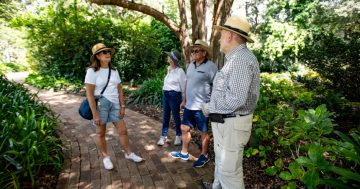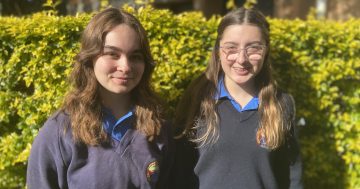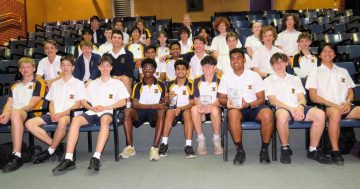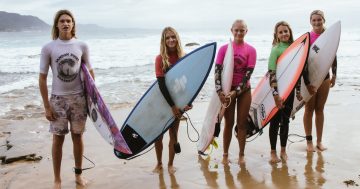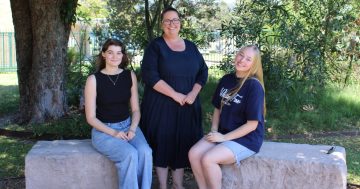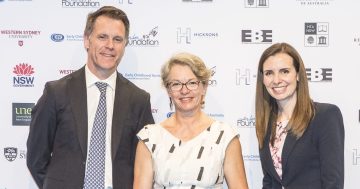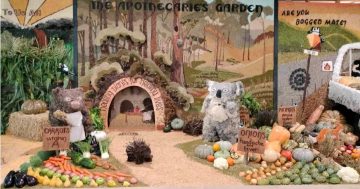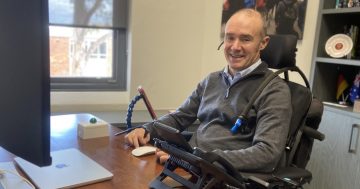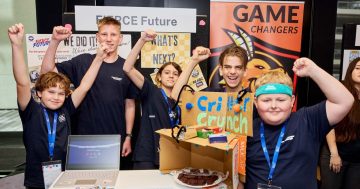
Smith’s Hill High students Catherine Yang, Yuan Yuan Guo and Fang Fang Guo received top honours for their work explaining art with mathematics. Photos: Keeli Royle.
A local Bulli High initiative has encouraged students from right across the region to think outside the box to put their original and innovative ideas into action.
The Multiverse Challenge is the brainchild of two Bulli High teachers, David Strange and Nik Brankovic, who wanted students to look beyond their curriculums to find the connections and skillsets that could help them in the real world.
Encouraged to “embrace their own strengths” and with the only rule a “futuristic” theme, more than 100 students entered the challenge with everything from YouTube science seminars to original music, and even cakes.
“Multiverse is huge,” Bulli High Principal Denise James said.
“It started last year for the first time with a science teacher and an English teacher having a conversation at a photocopier and sharing ideas. It’s now exploded this year, and there are many branches to it.”
English teacher Mr Strange said the initiative came about from the desire to “look out and say who can help us in the community”.
“Is it our alumni, is it local business, is it the tertiary world?”
“The challenge for the kids is to find the connection between their various subjects, but the challenge for the coordinators and Denise James and the school community is to say ‘How can we all pitch in, rally around our kids and give them their dream careers?'”
Mr Strange said the students can “essentially do anything” but they are encouraged to think in terms of ‘STEAM’ – STEM (science, technology, engineering and maths) plus arts.
“They might create a robot, or design a video game, they might learn to become an audio engineer, they might become an artist, or a filmmaker or a documentarian, but we want them to focus on the Illawarra or the future,” he said.

Bulli High teachers David Strange and Nik Brankovic created the challenge to give more students opportunities.
Smith’s Hill High School trio Catherine Yang, Yuan Yuan Guo and Fang Fang Guo received an award for their work connecting mathematics with visual arts.
“Initially we thought it was quite a challenging problem, we looked through some artworks and they were all very different,” Yuan Yuan said.
“[We were] thinking how we could connect these artworks through maths so we thought maybe do something related with probability and information theory, and that’s how we came about the idea.”
“We found that impressionism had the least amount of connections because it was the harbinger of the modernist period, it wasn’t the technical capacity of the artists that brought them together, more so the social and cultural factors,” Catherine added.
“Then we saw the abstraction of colour later on, which we connected to an abstraction of symbol and representation, which we overall thought was the trend after impressionism.”
“This particular challenge, a lot of prominent mathematicians ignored us and thought it was too hard but these girls weren’t overawed by the challenge,” Mr Strange said.
The task gave the students the rare opportunity to connect two seemingly opposing subjects.
“I think too often subjects are siloed and we think about our curriculum as being something separate, where really the meta language of our subject at the most esoteric level is often quite connected,” he added.
“We need teachers talking to each other and kids talking to other kids doing music or physics and finding the similarities between them.”
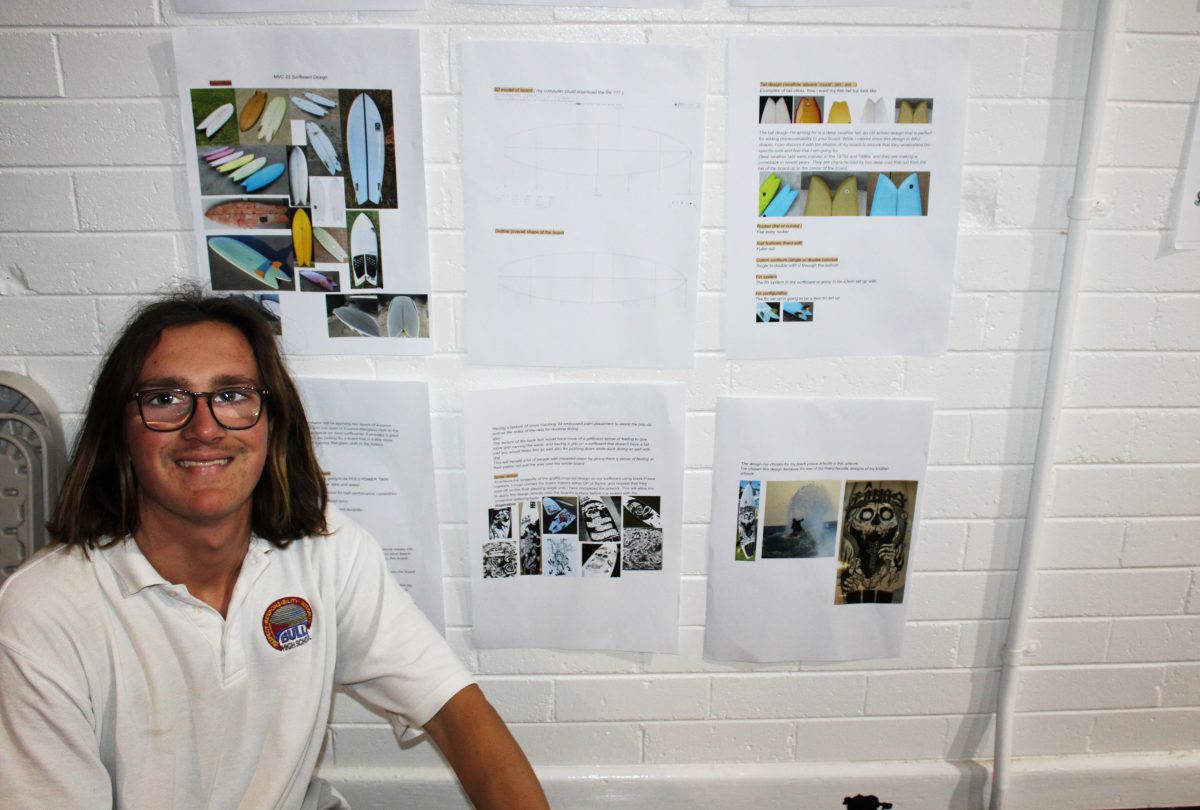
Bulli High’s Denim Budai hopes to continue exploring surfboard design in the future.
Bulli High’s Denim Budai turned his personal interests into overcoming a challenge of a different kind – with a unique surfboard.
“I came up with the idea of more of a fishtail surfboard, so the tail is more of a swallowtail design,” Denim said. “I was doing a lot of research about the dimensions of different boards and how to do it, I based it off a range of different boards.”
He and his friends, all of whom are keen surfers themselves, joined the competition just to see who could make the best board between them, but it’s ignited a passion in Denim to pursue this further and keep creating.
“I definitely want to design a board that can be used for vision impaired surfers, so having a sense of feeling like braille like dot paintings even, something that any surfer can feel,” he said.
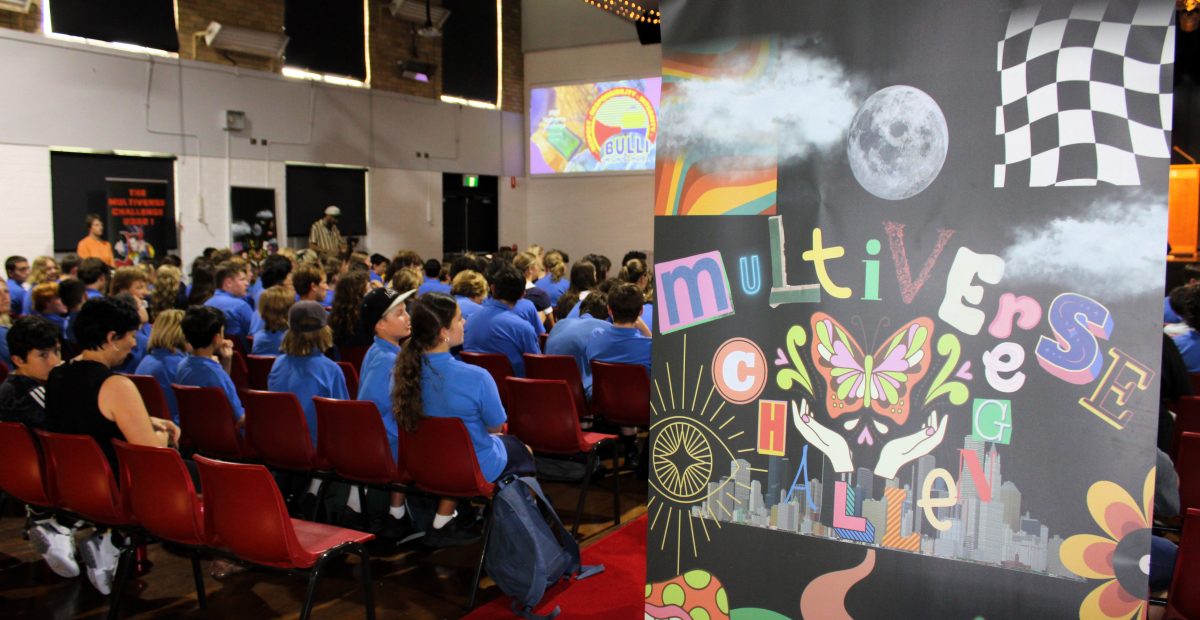
Students created artworks, music, documentaries and projects across a vast range of areas.
“When I started surfing I didn’t wear contacts so I was always missing the board, couldn’t see the waves, couldn’t see where I should put my hands and feet, and I got better when I started wearing contacts and then throughout the design process I was just thinking about what could have made it easier for me if I still had blurry vision while surfing and I thought the feeling the touch,” he explained.
Making those connections with industry professionals is also a key part of the program, and more businesses are getting on board.
“It’s all about challenging students who want to be part of the program and linking them with professionals in the industry,” Ms James said.
“Whether it’s music mentoring, where they learn where to write a song and record it with actual professionals and learning that standard and getting picked up along the way, one of our students has even been signed to a label.”
“And I think when students can see something that they might enjoy as a hobby can actually be a career, that’s really exciting.”
There’s hope to expand the program even further in future years to give more children opportunities, no matter their interests.
“I think what we hope for is that kids are not afraid to dream big and to work hard,” Mr Strange said.
“If they want to get on the plane and be the next tech guru in California, we support that, if they want to design a surfboard and go to Hawaii and a make a million bucks, we support that, if they want to write a beautiful song about their grandmother, we support that.”








